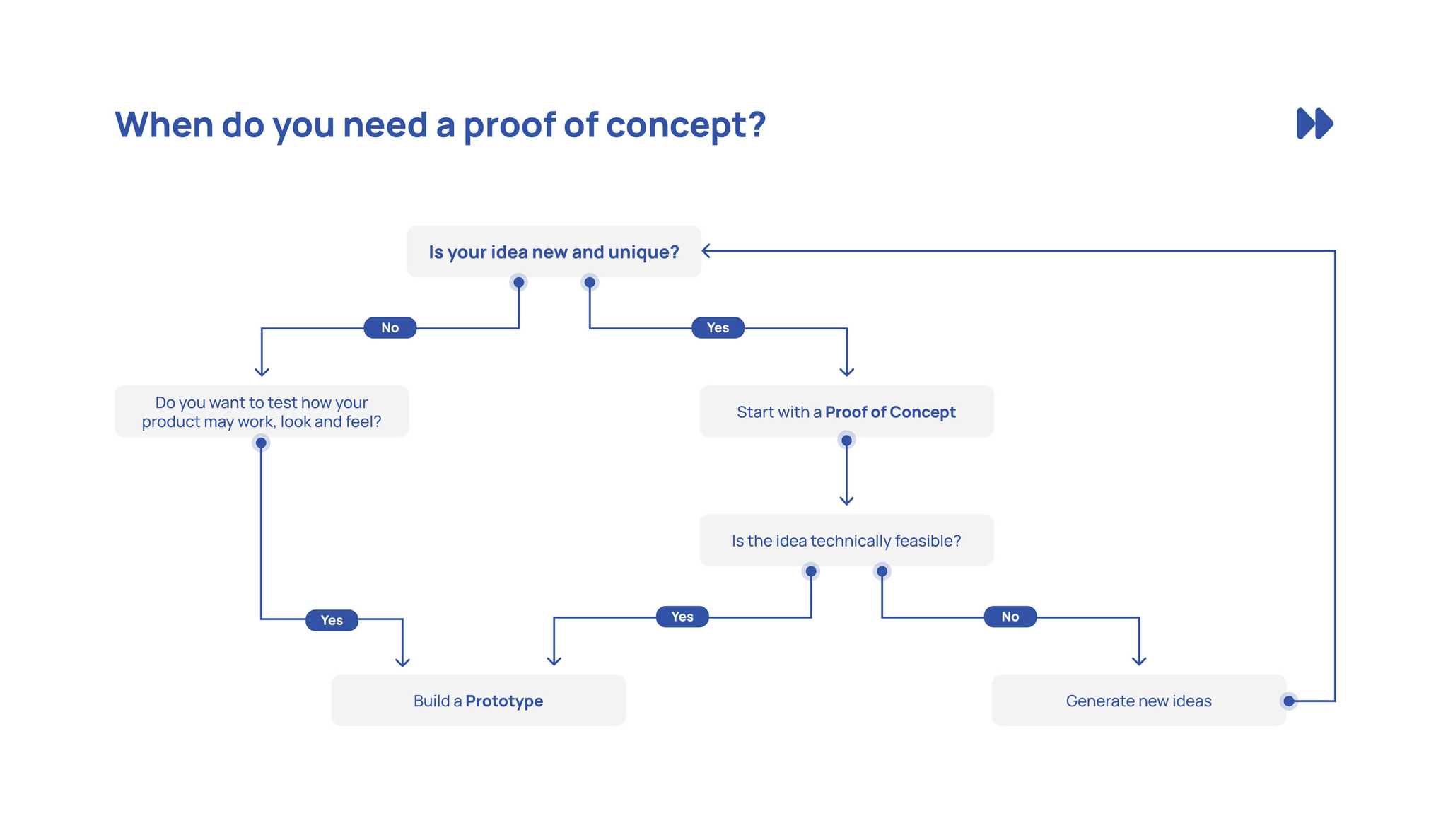Bringing a new idea to life can be, both, exhilarating and challenging. For businesses looking to develop new ideas, projects, solutions or products it is crucial to ensure that their innovative concepts are not only feasible but also hold real market potential.This is where a Proof of Concept (PoC) comes into play.
As a custom software development company with years of experience behind us, we know just how important each step of the development process is and we are grateful to have already taken part in many success stories of our clients along the way. One of our many specialties of this process lies in providing PoC services that help you validate your ideas before fully committing resources.
We will dive deeper into what a Proof of Concept is and why it's an essential step in your software development journey.
What is Proof of Concept?
A Proof of Concept (PoC) is a preliminary version of a software solution, developed to demonstrate its feasibility and potential. It serves as a critical step in the software development lifecycle, allowing stakeholders to evaluate whether the concept can be transformed into a fully functional product.
Unlike a prototype or minimum viable product (MVP), a PoC focuses solely on validating specific functionalities or assumptions, rather than providing a near-complete product.
Key components of a PoC:
- Feasibility study: Assessing technical requirements and potential challenges.
- Design and development: Creating a basic model that highlights core features.
- Testing and evaluation: Ensuring the concept works as intended.
- Feedback and iteration: Gathering insights and refining the concept.
Why you absolutely need a PoC
- Risk mitigation
- Validation of ideas
- Stakeholder confidence
- Efficient resource allocation
- Early user feedback
Let's explore each reason in more depth, with scenarios illustrating how a PoC can be a game-changer.
1. Risk mitigation
Imagine you're a mid-sized company planning to launch a complex software solution that integrates with various third-party services. This integration is crucial for your product's success but also presents significant technical risks. By developing a PoC, you can test these integrations in a controlled environment.
How PoC helps:
- Identify technical challenges early: The PoC reveals potential integration issues that could disrupt your project if left unaddressed.
- Save time and money: By identifying and resolving these risks early, you avoid costly delays and rework during full-scale development.
2. Validation of ideas
Consider a fresh startup with a groundbreaking idea for a new social media platform. You have an innovative concept but lack the funds to develop it independently. To attract investors, you need to demonstrate that your idea is not only innovative but also viable.
How PoC helps:
- Bring your idea to life: A PoC allows you to create a working model of your social media platform, highlighting key features and demonstrating its potential.
- Opportunity to pitch: Armed with a PoC, you attend a tech conference where startups meet investors. The PoC helps you pitch your idea convincingly, showing that your concept works and has real market potential.
3. Stakeholder confidence
You're an established company looking to develop a new internal tool to streamline your operations. However, the board of directors is skeptical about investing in a new technology initiative without concrete evidence of its benefits.
How PoC helps:
- Demonstrate tangible progress: Developing a PoC shows the board a working version of the tool, illustrating its potential to improve efficiency and reduce costs.
- Secure buy-In: The PoC provides the evidence needed to secure approval and funding from the board, moving the project forward with confidence.
4. Efficient resource allocation
A small business is exploring multiple innovative ideas but has limited resources to develop them all. You need to determine which idea has the most potential before fully committing your budget and team.
How PoC helps:
- Prioritize high-potential ideas: By developing PoCs for each idea, you can compare their feasibility and potential impact.
- Focus efforts on the best idea: This process allows you to allocate your resources efficiently, focusing on the idea that has the highest chance of success, thereby optimizing your development efforts and budget.
5. Early user feedback
You're developing a new mobile app aimed at enhancing customer engagement for retail businesses. To ensure the app meets user needs, you need feedback from potential users as early as possible.
How PoC helps:
- Engage users early: The PoC allows you to gather feedback from a small group of target users, identifying any usability issues or desired features.
- Refine the concept: With this feedback, you can make informed adjustments to the app, ensuring the final product aligns closely with user expectations and requirements.
Conclusion
Investing in a Proof of Concept is a smart move for any business looking to develop custom software solutions. At Mitigate, we pride ourselves on our ability to help clients validate their ideas, ensuring they are both feasible and primed for success.
By mitigating risks, validating ideas, securing stakeholder confidence, efficiently allocating resources, and gathering early user feedback, a PoC sets the foundation for a successful software development project. In our next article, we will walk you through the step-by-step process of how Mitigate develops a successful PoC.
Stay tuned for more insights into how Mitigate can help turn your innovative ideas into reality.


